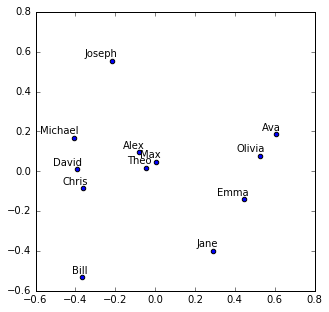Představte si, že jste antropolog, který byl vyslán ke kmeni programátorů, aby vyzkoumal, jak zrychlit jejich práci.
Nejjednodušší je, začít daný kmen pozorovat. Máme štěstí, o programování žvaní téměř bez přestání. Vypadá to, že nejdůležitější je, jestli se používají mezery nebo něco, čemu říkají tabelátory. Tak ne, nejdůležitější je psát funkcionálně, stav by měl být prohlášen za tabu. Aha to asi taky ne. Že by řešením bylo zbavit se typů? Nebo je naopak zavést? Co domorodec, to názor.
Také jim můžeme položit následující dvě otázky
- Kdybyste si mohli volně vybrat technologie pro příští projekt, o kolik byste byli rychlejší?
- Pokud byste psali váš současný projekt se současnou technologií znovu od začátku, o kolik byste ho udělali rychleji?
Nevím jak váš, kmen, ale u toho mého by výběr správné technologie moc velké zrychlení nepřinesl. To se samozřejmě může lišit, pokud děláte v korporaci, která vás nutí používat nepoužitelné nástroje, tak přechod na něco příčeňejšího může přinést docela dost. Něco jako když vás nutí hrát basketbal ve svěrací kazajce a pak vám uvolní jednu ruku. Ale u nás ostatních, technologie a programovací finty už tak zásadní přínos obvykle nemají. Něco jako, když jsme doteď hráli bosí a dostaneme super boty. Pomůže to, ale pokud nedokážeme trefit koš, tak zas ne o tolik.
Co odpověď na druhou otázku? To je jiná. Kdybychom současný projekt dělali znovu, tak bychom se vykašlali na tuhle funkcionalitu, protože jsme ji nakonec stejně vymazali, zeptali bychom se finančního ředitele na jeho názor mnohem dřív, takže bychom nemuseli půlku aplikace úplně předělávat. Možná bychom se do toho projektu vůbec nepustili, protože bychom věděli, jak neuvěřitelně nákladné to nakonec bude.
Proč bychom ten samý projekt psali po druhé mnohem rychleji? V čem je ten rozdíl? V tom, že se při implementaci projektu hlavně učíme. Ano, navenek to vypadá, že hlavně píšeme kód, ale největší fuška je v učení se. Učíme se co zákazník chce. Učíme se jak to sakra zaintegrovat do té hromady čehosi, co už ve firmě máme. Učíme se, jak komunikovat se svými kolegy. Učíme se jak ten systém provozovat. Učíme se jak to efektivně nasazovat. Pořád se prostě jen něco učíme.
Ano, psaní kódu je důležité, je to náš hlavní užitečný výstup, ale není to to, co nás brzdí. Sebelepší programovací prostředí, které mi bude číst myšlenky a generovat podle nich kód mi nepomůže, pokud nevím co mám dělat. Možná vás to překvapí, ale nepomůžou mi dokonce ani mikroservices.
Proč to píšu? Přijde mi, že si to lidé neuvědomují. Jeden můj výše postavený kolega se nám snaží pomoci tím, že chce některou naší méně důležitou programovací práci hodit na někoho mimo tým. Prostě někoho najmeme a o nám to naprogramuje. Jednoduché jako facka. Není. Psaní kódu je bohužel ta nejméně problematická část. Nejtěžší je vymyslet co to má dělat, jak se to má napojit, jak to provozovat a udržovat. To se outsourcovat nedá. Psaní kódu je navíc to co nás na tom baví, takže by nám zůstaly ty věci kolem. Programování by si slízl někdo jiný. Odporná představa.
Důležitost učení si ale neuvědomují ani programátoři. Ti stále vedou své žabomyší války o tom, jestli je lepší Emacs nebo Vi, jestli mají ukládat data do SQL nebo NoSQL, jestli mají používat Docker nebo nevím co. Něco z toho jsou užitečné debaty, ale dokud se ve stejné míře nevěnují i tomu, jak se lépe učit i ty nezáživné neprogramovací věci, tak jsou to debaty bezpředmětné. Lepší technologie mi může pomoci vyndat ze svěrací kazajky i tu druhou ruku, ale když nebudu mít zájem učit se pravidla hry a nepochopím, že tu skákavou kulatou věc mám dostat do té obroučky co visí nesmyslně vysoko nad hřištěm, tak jen budu pokračovat ve zmateném pobíhání po hřišti. Nejspíš mě to bude víc bavit, ale výsledek nebude o moc lepší.


